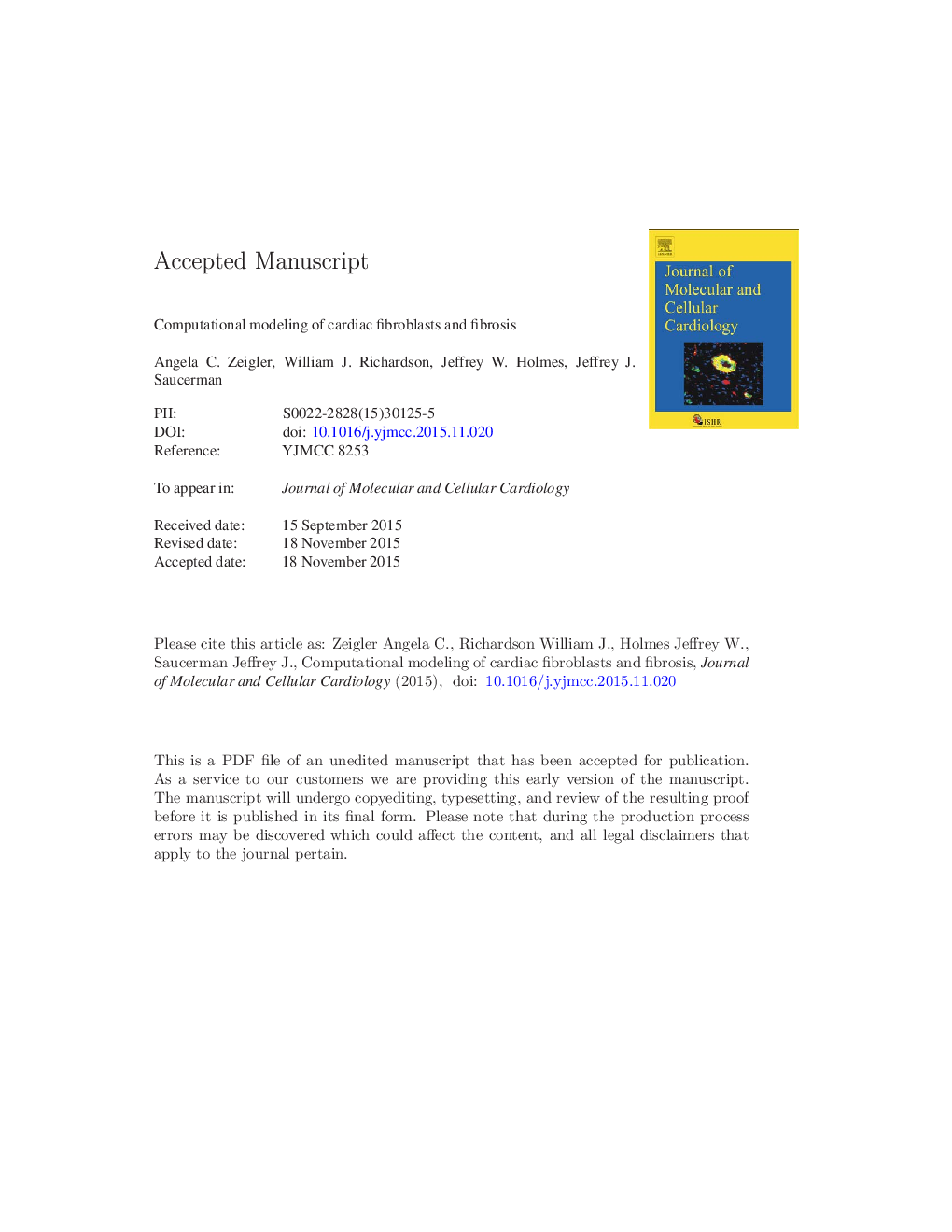| Article ID | Journal | Published Year | Pages | File Type |
|---|---|---|---|---|
| 8473867 | Journal of Molecular and Cellular Cardiology | 2016 | 34 Pages |
Abstract
Altered fibroblast behavior can lead to pathologic changes in the heart such as arrhythmia, diastolic dysfunction, and systolic dysfunction. Computational models are increasingly used as a tool to identify potential mechanisms driving a phenotype or potential therapeutic targets against an unwanted phenotype. Here we review how computational models incorporating cardiac fibroblasts have clarified the role for these cells in electrical conduction and tissue remodeling in the heart. Models of fibroblast signaling networks have primarily focused on fibroblast cell lines or fibroblasts from other tissues rather than cardiac fibroblasts, specifically, but they are useful for understanding how fundamental signaling pathways control fibroblast phenotype. In the future, modeling cardiac fibroblast signaling, incorporating -omics and drug-interaction data into signaling network models, and utilizing multi-scale models will improve the ability of in silico studies to predict potential therapeutic targets against adverse cardiac fibroblast activity.
Keywords
PKCGSK3αphosphorylated signal transducer and activator of transcription 3pSmad2EPMTMLCαSMAAPDIL6SANpSTAT3BMSCECMPLCFGFFAKTGFβMMPEGFMEFABMODEalpha smooth muscle actininterleukin 6EMTFinite element modelTIMPmyosin light chainsSystems biologyBone marrow stem cellsepidermal growth factorfibroblast growth factorphospholipase CCardiac fibroblastFibrosisExtracellular matrixMetalloproteinaseAction potential durationComputational modelingAgent-based modelordinary differential equationTissue inhibitor of metalloproteinasesmouse embryonic fibroblastProtein kinase CFEMfocal adhesion kinaseEpithelial–mesenchymal transitionSinoatrial node
Related Topics
Life Sciences
Biochemistry, Genetics and Molecular Biology
Cell Biology
Authors
Angela C. Zeigler, William J. Richardson, Jeffrey W. Holmes, Jeffrey J. Saucerman,
